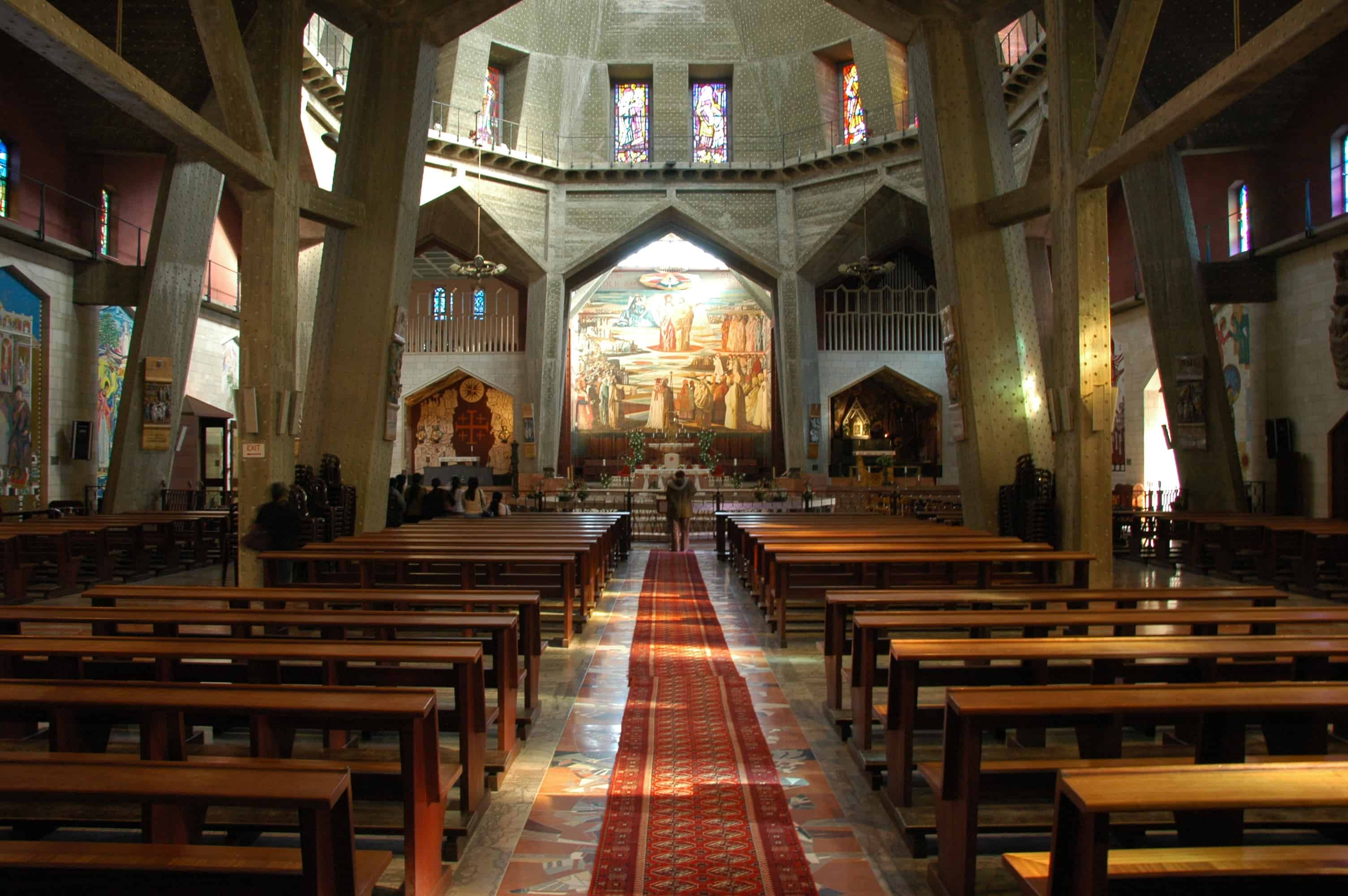By Merle Rosenstein
Christian travel to Israel, the fastest growing tourist market over the past five years, is rapidly on the rise. The remains of ancient cities and places of worship bring biblical stories to life. Visit the birthplace of Jesus and the documented locations of his miracles, and tour the grounds of famous battles, whose outcomes had critical importance for the people of Israel. Here are some of the key places of interest:
According to tradition, Nazareth, in Lower Galilee, is the place where the angel Gabriel told Mary she would conceive by the Holy Spirit. Jesus also spent his childhood in Nazareth. A small city of 2,000 before the birth of Christ, Nazareth became a major pilgrimage site that many Christians came to visit. The Church of the Annunciation, built on the site of Mary’s home, was erected as a result of these visits and more churches were built throughout the city. Nazareth is now the largest Arab city in Israel with a number of churches, monasteries, mosques and synagogues.
The Church of Saint Joseph is said to sit on top of the ruins of Joseph’s (Mary’s husband) carpentry shop. The Greek Orthodox Church of the Annunciation is purported to be the location of the synagogue where Jesus prayed.
The Arab village of Kafr Cana in Lower Galilee, is thought to be the place where Jesus performed his first miracle – the of making wine from water, while he attended the wedding of a poor couple.
Megiddo, the remains of an ancient fortified city, is one of the most famous battlegrounds in the world, having endured conflicts with the Assyrians, Canaanites, Egyptians, Greeks, Israelites, Persians, Philistines, and Romans. According to the New Testament book of Revelation, Megiddo will be the site of the great battle of the End of Days and is referred to as Armageddon.
Jerusalem, is where Jesus lived and died. The Christian Quarter of the Old City houses some 40 religious buildings. One of the most visited sites, Via Dolorosa, the “Way of Sorrows,” traces Jesus’ final path as he carried the cross to his crucifixion. Pilgrims follow in His footsteps from Lion’s Gate in the Muslim Quarter, to the Church of the Holy Sepulcher. The anointing stone (on which Jesus’ body was laid before his burial) and Jesus’ grave are housed within this church. The Pool of Bethesda, as written in the gospel of John, is the site of Jesus’ healing of a paralyzed man and the place of birth of Mary’s mother Anne.
Southwest of the Old City is Mt. Zion, where Christian tradition holds that Mary spent her last night. In the basement of The Dormition Abbey, built about 100 years ago, there is a statue of the sleeping Mary. Beside the Abbey is the Room of the Last Supper, where Jesus ate his last meal.
Located east of Jerusalem’s Old City, Mount of Olives is most often referred to in the New Testament as the route from Jerusalem to Bethany, where Jesus had lodging, and the place where he wept over Jerusalem. Jesus is also said to have spent time on the Mount teaching his disciples. Mary's Tomb is located in the Kidron Valley, on the foothills of Mount of Olives, near the Church of All Nations and Gethsemane Garden. The Kineret, also known as the Sea of Galilee, was the place where Jesus lived, preached and performed miracles, such as walking on water. The miracle of the loaves and the fishes (Jesus fed 5,000 people with five small barley loaves and two small fish) is said to have happened in nearby Kfar Nakhum or Capernaum.
The Kineret, also known as the Sea of Galilee, was the place where Jesus lived, preached and performed miracles, such as walking on water. The miracle of the loaves and the fishes (Jesus fed 5,000 people with five small barley loaves and two small fish) is said to have happened in nearby Kfar Nakhum or Capernaum.
Christian holy sites around the Kineret include the Mount of the Beatitudes, the hill upon which Jesus is said to have preached the “Sermon on the Mount”, Church of the Loaves and the Fishes, a model of the fourth century basilica built to commemorate the miracle of the feeding of the five thousand, and Yardenit ("little Jordan"), located at the southern exit site of the Sea of Galilee, believed to be the place where Jesus was baptized by John the Baptist.
Find more information on Christian travel to Israel at www.goisrael.com
Israel

Image Via: Israel Govt Tourist Office
A Divine Destination - Making The Most Of Christian Travel To Israel
/
May 24, 2011

